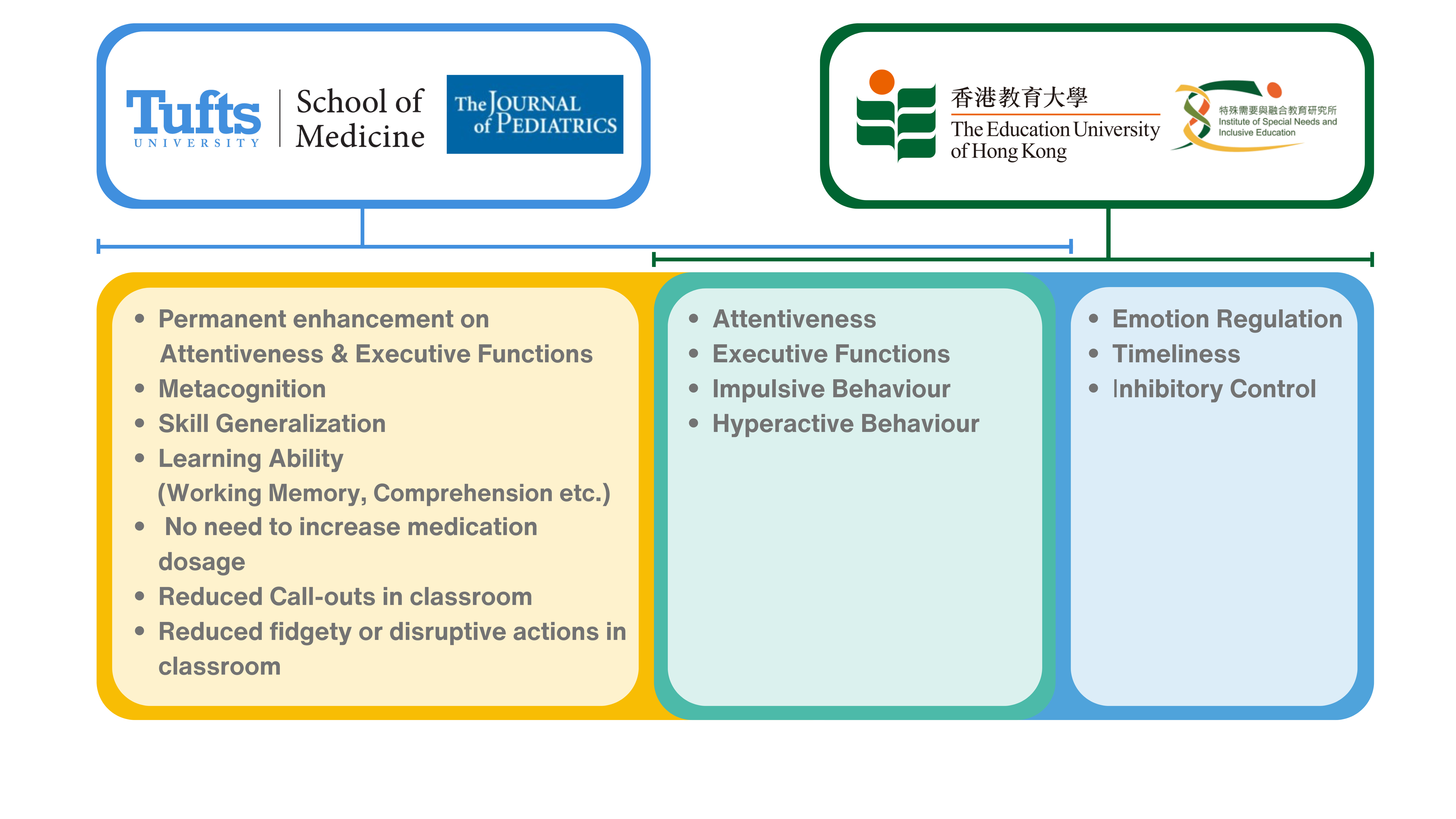The theory of neuroplasticity suggests that regardless of age, repetitive training can lead to new connections and integration in the brain, thereby changing its functionality.
With the help of brainwave technology, through targeted exercises covering cognitive functions such as attention, perception, learning, and problem-solving, we can effectively enhance cognitive abilities and strengthen the brain’s executive functions.
The theory of neuroplasticity suggests that regardless of age, repetitive training can lead to new connections and integration in the brain, thereby changing its functionality.
With the help of brainwave technology, through targeted exercises covering cognitive functions such as attention, perception, learning, and problem-solving, we can effectively enhance cognitive abilities and strengthen the brain’s executive functions.

This US-originated technology is clinically validated and has been used worldwide for over 30 years in hospitals, clinics, and educational institutions.
Clinically Validated – Permanently enhance participants’ attention and executive function – Tufts University School of Medicine Research Proven – Effectively enhance children’s attention, emotional control and executive function – The Education University of Hong Kong
Research Proven – Effectively enhance children’s attention, emotional control and executive function – The Education University of Hong Kong

By detecting brainwave activity and displaying your attention level in real-time, we enable you to:

Through a series of low-stimulus neurocognitive training games, you can exercise and strengthen your "brain muscles" . All programs are personalized to your unique profile, with built-in AI algorithms tracking progress and optimizing content.
Neurocognitive training has yielded bountiful benefits, helping countless children and adults achieve astonishing lifelong improvements.
Training :
An exercise to extend one’s attention span and to remain focus for longer period of time.
Real life scenario:
The ability to sustain attention is essential in all daily normative function. For example, classroom, work…
Training :
To train one’s ability to sustain attention on a moving target
Real life scenario:
In a classroom environment where students have to maintain visual contact with their teacher for an extended period.
Training :
To Improve one’s ability to complete tasks within certain timeframe and manage to stay away from distractions.
Real life scenario:
Students who are tasked to complete homework within a reasonable amount of time.
Training :
Enhance the ability to absorb sequences of “chunk” of data, and hold them in the brain long enough to carry out the tasks.
Real life scenario:
Short term Memory is essential for tasks like remembering multi-steps directions.
Training :
The exercise enhances the ability to mentally discriminate between incoming stimuli very quickly, allowing you to pay attention to what you want to, while filtering out distractions.
Real life scenario:
The ability to perceive, prioritise and respond to the innumerable stimuli like phones, incoming messages, notifications, etc has become a crucial skillset in today’s world
Training :
An exercise to improve one’s ability to receive information and instruction from diverse sources, hence give responsive reactions
Real life scenario:
Being able to take verbal instructions from teachers, supervisor, parent and respond accordingly.
Training :
Improving the ability of the vision system to coordinate the information received through the eyes to control, guide, and direct the hands in the accomplishment of a given task
Real life scenario:
Improve actions that involve fine motor skills such as handwriting, sports, and simple tasks like brushing your hair or making a cup of tea.
Training :
Improves the ability to recognize and respond to social expressions, facial cues, and body language, allowing more effective personal interaction with others.
Real life scenario:
Allowing one to be more sensitive to different social cues, easing the anxiety of making and keeping friends.
Training :
Improve one’s ability to remember where an object is located or where an event occurred.
Real life scenario:
Able to remember where you left your books or your keys at home.
Training :
Strengthen the ability to retain and manipulate information needed to do complex task such as reasoning, comprehension and learning – even amidst distraction.
Real life scenario:
Being able to solve problems, find new solutions, stay focused on a task, block out distractions, and do mental arithmetic.
Training :
Real time monitoring of ones’ mental state and improving the effectiveness of each mindfulness session.
Real life scenario:
Practicing mindfulness will help relieve stress and improve mental health.
Training :
All the other cognitive skills being developed in the program will be transferred to real life applications with this exercise.



